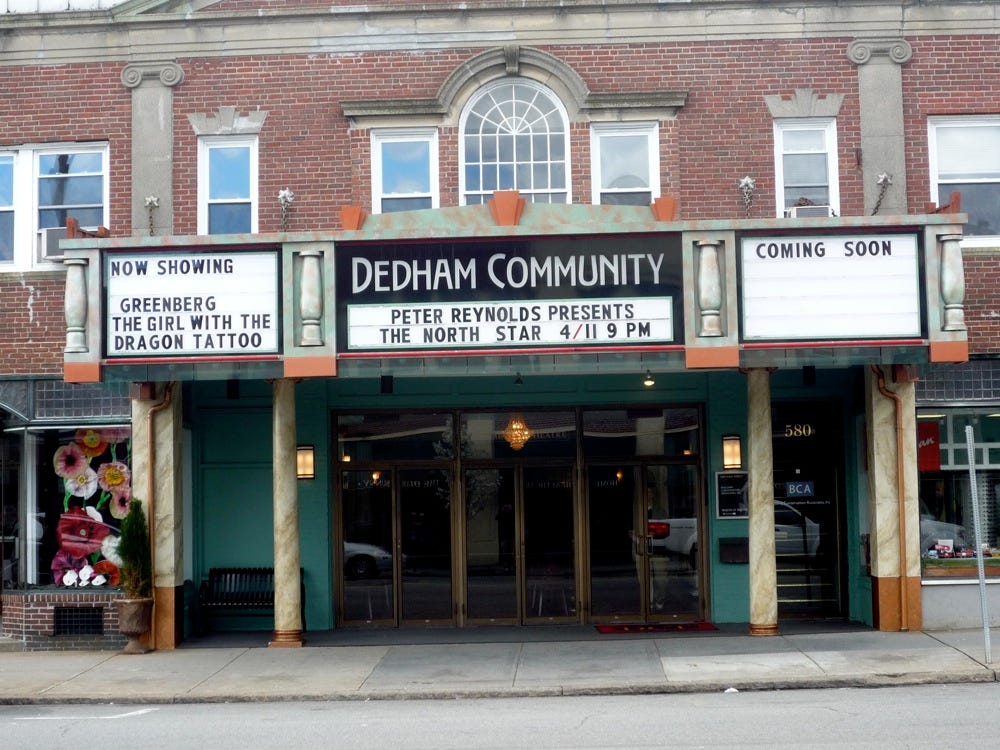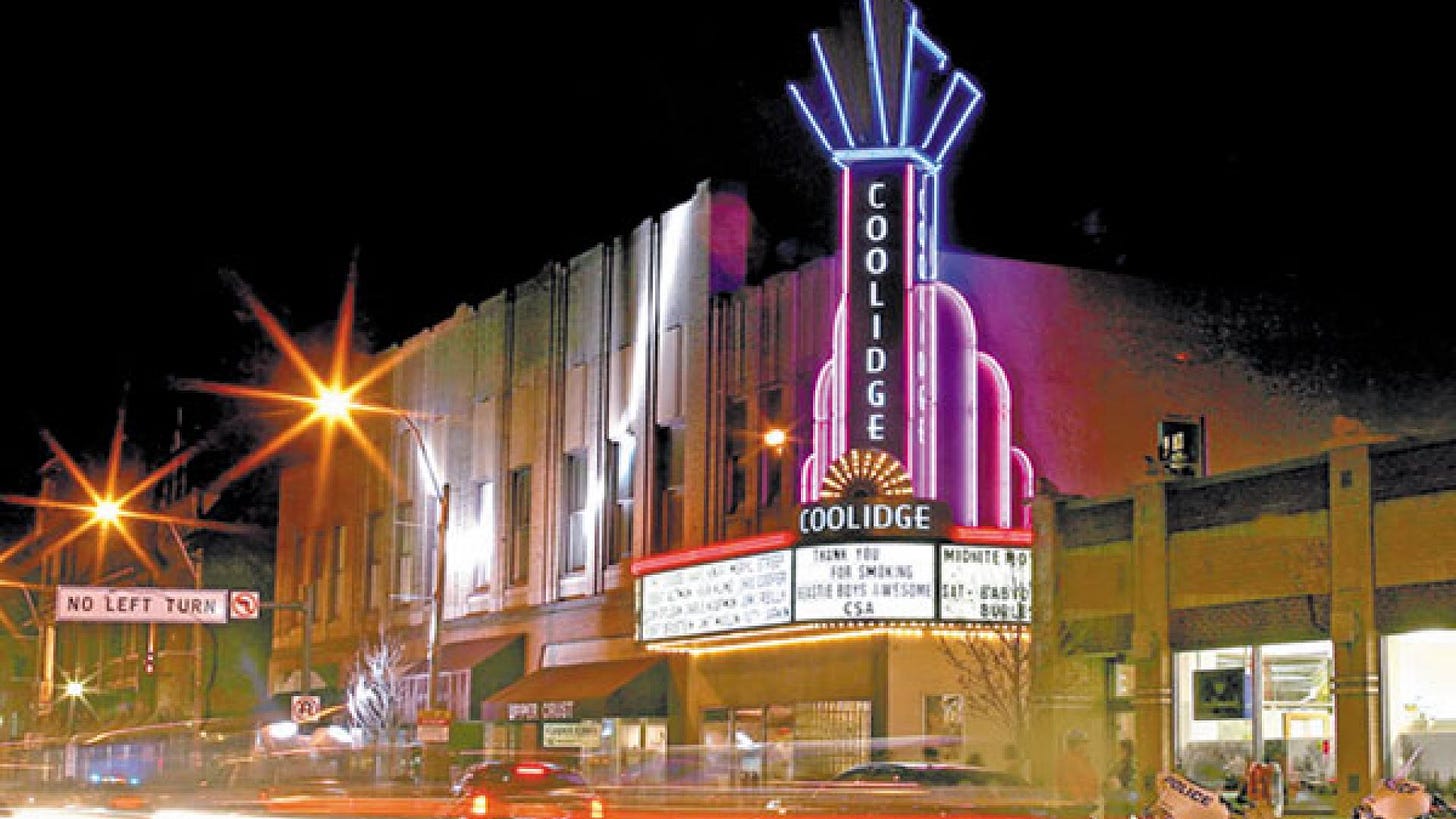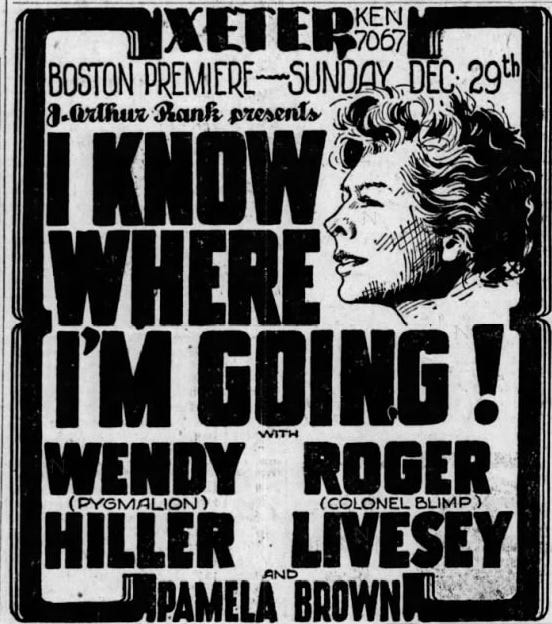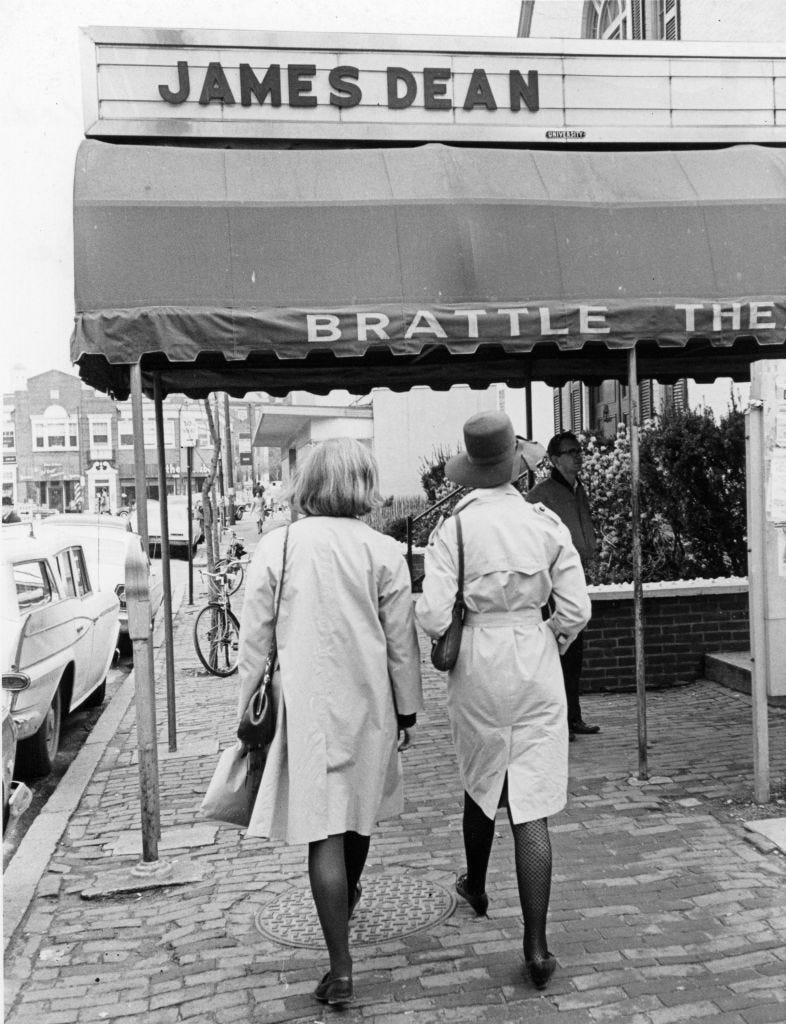Is there a movie theater you hold close to your heart? Maybe the one in which you sat gobsmacked as a kid or a young adult as “Titanic” or “Star Wars” or “Lawrence of Arabia” unfurled across a giant screen? Or maybe it’s your town’s version of The Little Art House That Could (survive in an age of multiplexes and streaming TV)? I ask for a couple of reasons. One, I miss going to my beloved Coolidge Corner Theatre, a neighborhood jewel I’ve been patronizing for so many decades that I remember when it was a neighborhood dump. (I know, I know, the Coolidge is once again open for business, but I’ve been staving off movie date-night with my wife until Omicron dies down a little further.) Two, I’d like to get the supporters of the Dedham Community Theatre off my back.
I jest. Still, the devotion shown to the Dedham by moviegoers in this south-southwest pocket of Boston’s inner suburbs is ferocious and welcome in a time of declining audiences. Seriously, I think some of these people are more loyal to the DCT than they are to their spouses. I regularly give talks in the Greater Boston area, to libraries and schools and senior groups, and I’ve been buttonholed more times than I can count, online and off, to write something up about this century-old two-screen bijou in downtown Dedham, with its marquee advertising the latest independent releases. (Showing this week: The Norwegian charmer “The Worst Person in the World” and “Jockey,” a racecourse drama with an overdue lead role for character actor Clifton Collins Jr.)
That the theater stands in the shadow of the Showcase Cinema de Lux Legacy Place, a 15-screen gorilla a mile and a half away, only heightens the sense of urgency. The two venues represent the bipolar state of film exhibition in this country: The Community Theatre an old-school picture palace in the center of town, showing thoughtful dramas and foreign fare, and Legacy Place out on the miracle mile with a diet of high-fructose studio franchise sequels, action blockbusters, and family animation. Audiences may go to Legacy Place, but they love the Dedham Community Theater.
The same goes for the Coolidge, which is lucky to have its literate, boho-bourgeois neighborhood all to itself – the closest multiplex is the 11-screen Regal Fenway, 1.3 miles and a cultural galaxy away. The Coolidge was my childhood movie theater, featuring surreal kiddie matinees like “The Magic World of Topo Gigio” (1965), starring the Italian mouse puppet featured on “The Ed Sullivan Show”; a traumatizing Mexican Santa Claus movie I’ve written about previously; and “The Lemon Grove Kids Meet the Monsters,” a ragtag Bowery Boys rip-off now considered a cult classic by connoisseurs of psychotronic cinema but which was roundly booed by my audience of discerning eight-year-olds in 1965. (There’s a story there I’ve related in the Globe and elsewhere and will probably repurpose here at some point. Suffice to say it was a turning point in the primal forming of a movie critic.)
The Coolidge was converted in 1933 from a Universalist church built at the turn of the century, and by the mid-1960s it was decidedly down at its heels, but it continued into the early 1970s as a repertory theater, showing double bills of Marx brothers movies, screwball comedies, Astaire-Rogers musicals, and Brando classics. It was operated then by a gentleman named Justin Freed, who also ran the now-vanished Kenmore Square Cinema and the tiny Park Square Cinema tucked in by the Greyhound station downtown; their programming calendars, printed on neon-colored sheets with drawings of Cary Grant, Mae West, and the like, are Proustian talismans for a generation of Boston area movie brats. This was my film school. I still remember a showing of “Now, Voyager” at the Park Square where a little old lady in the row behind me said every one of Bette Davis’s lines before Bette Davis did.
These were just three of what felt like dozens of Boston area theaters during the revival-house renaissance of the 1960s and 70s, a boom that was abruptly cut short by the rise of home video. Most of them are no longer with us: The Exeter Street Theatre with its lineup of British comedies and romances, run by a pair of sisters who were too cheap to install air-conditioning but would open up the doors to “let the breeze come in off the Charles.” The Allston Cinema, which played “Harold and Maude” for two solid years and helped turn a commercial flop into a cherished classic. (I think I went every weekend for six months.) The legendary Orson Welles Cinema, down the street from Harvard Square, which broke “The Harder They Come” and introduced reggae to America in 1973. The five-screen Nickelodeon, which lasted until 2001 before being swallowed up by an expanding Boston University. And of course the Brattle Theatre, the site of the Big Bang itself: The first repertory cinema to open, in 1953, and still in business 70 years later, curating foreign and independent films and restored classics with a defiantly independent approach. The Brattle is where the cult of Bogart began during Harvard exam weeks in the 1950s and where the entire concept of retro movie cool was born.
The Brattle’s still there, hanging tough through the pandemic with its single screen rear-projection quiddity intact. So is the Coolidge, which famously nearly fell to the wrecking ball in the 1980s before getting rescued by a community protest and becoming the cultural anchor of its neighborhood; it recently announced plans to expand by 14,000 square feet. And there are other old neighborhood theaters keeping the flame of engaged indie movie-going: The Somerville Theatre, site of the Independent Film Festival of Boston and an annual 70mm film festival that needs to come back from its pandemic hiatus; the funky West Newton Cinema, with its rabbit warrens of screening rooms; the Capitol in Arlington; the Cabot Street Cinema up in Beverly and the Cameo down in Weymouth. They’ve survived the coming of multiplex chains and they’re surviving COVID-19 – will they survive the rise of at-home streaming and binge TV? I guess that’s up to you.
What was your movie house? Use the comments to tell us about the theater or theaters that made you love film when you were young, that prompt remembrances of first dates and midnight crowds, and that keep you coming today (in theory, if not in masked and vaccinated fact). A marvelous website for jogging memories is Cinema Treasures, with individual pages devoted to 37,638 US movie theaters long gone and still open, and where patrons and former employees gather online to swap stories and exchange trivia. I’ve linked the first mention of each theater in this article to its Cinema Treasures page. Enjoy, and feel free to share, whether your formative moviegoing was in Boston or elsewhere. There’s a whole other post I could write about the revival houses of New York City – and will, someday.
If you enjoyed this edition of Ty Burr’s Watch List, please feel free to share it with friends.
If you’re not a paying subscriber and would like to sign up for additional postings and to join the discussions, here’s how:
If you’re already a paying subscriber, I thank you for your generous support.







